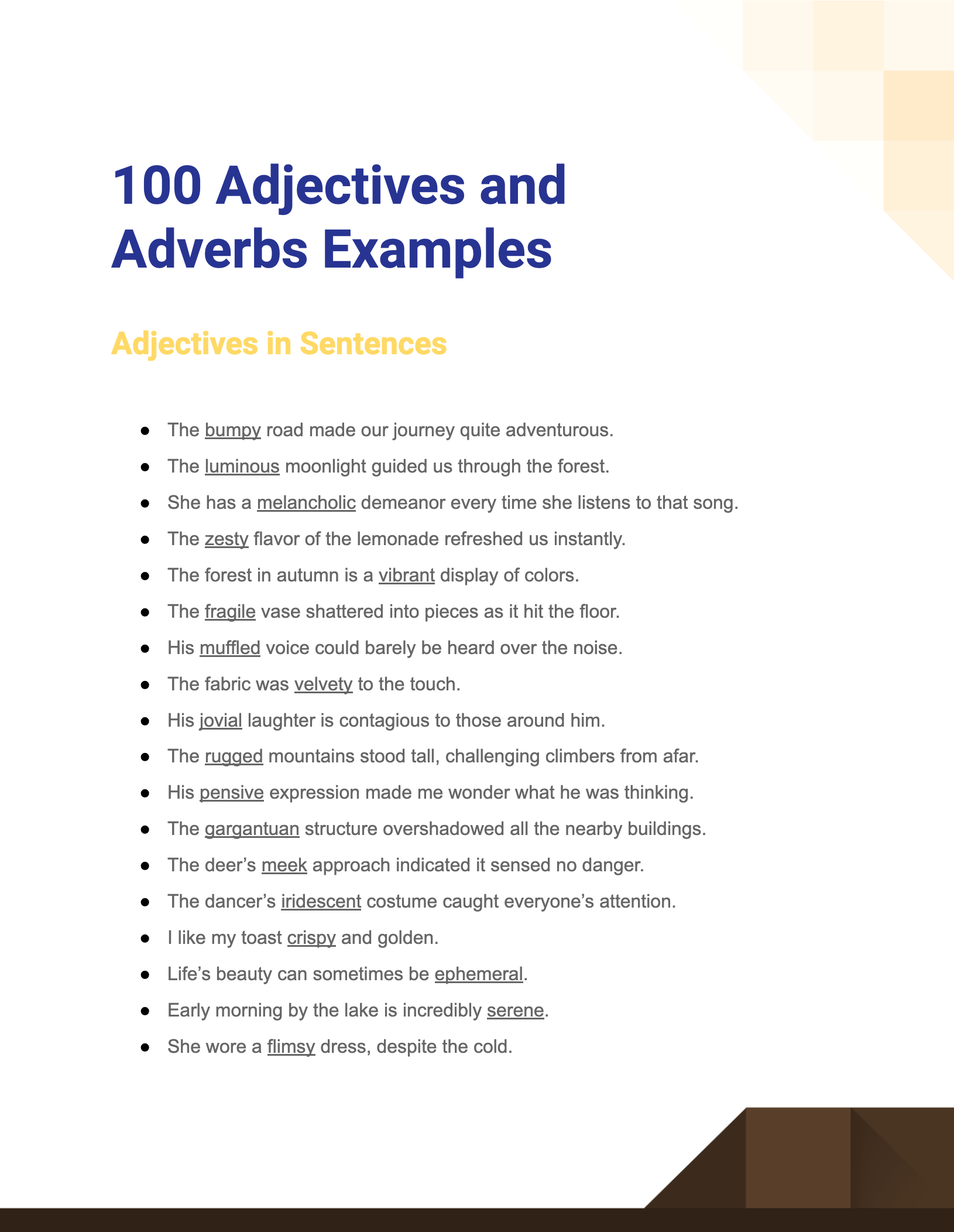When it comes to understanding the English language, it is important to have a good grasp of verbs, adverbs, and adjectives. These parts of speech play a crucial role in constructing sentences and conveying meaning. In this article, we will explore some examples of how verbs, adverbs, and adjectives work together to create clear and effective communication.
By learning how these parts of speech interact, you can enhance your writing and speaking skills, making your communication more precise and engaging.
Verb Adverb Adjective Examples
1. Verb: The dog ran quickly.
Adverb: The dog ran quickly.
Adjective: The quick dog ran quickly.
2. Verb: She sang beautifully.
Adverb: She sang beautifully.
Adjective: She had a beautiful voice when she sang.
3. Verb: The car drove slowly.
Adverb: The car drove slowly.
Adjective: The slow car drove slowly.
4. Verb: He walked quietly.
Adverb: He walked quietly.
Adjective: He had a quiet walk.
5. Verb: The children played happily.
Adverb: The children played happily.
Adjective: The happy children played happily.
Understanding how verbs, adverbs, and adjectives work together can help you create more dynamic and descriptive sentences. By choosing the right adverb or adjective to modify a verb, you can add depth and clarity to your writing.
Practice incorporating these examples into your own writing to improve your language skills and enhance the impact of your communication.
In conclusion, mastering the use of verbs, adverbs, and adjectives is essential for effective communication. By understanding how these parts of speech interact, you can elevate your writing and speaking abilities, making your messages more engaging and impactful.
